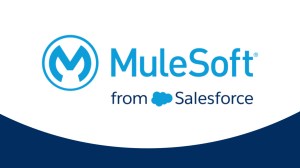The Democratization of Innovation

Building for the future
In the 1920s, each part of the Model T Ford was produced entirely by the Ford Motor Company. At one point, Ford owned coal mines in Kentucky, timberland in Michigan and Minnesota, a series of rubber plantations in Brazil, a fleet of ships, and a railroad to source and deliver the raw materials for its vehicles.
In today’s fast-paced world, it’s impossible for the automaker to own the entire supply chain. Ford operates more efficiently by focusing on assembling the pieces, while relying on hyper-specialized manufacturers and distributors to ship each component — from seating systems to engines. Over the last few decades, successful organizations have transitioned from do-it-all conglomerates to savy assemblers of externally-sourced parts.
With the advent of the World Wide Web, anyone could become an assembler of parts because they could access the basic building blocks (HTML, hyperlinks, HTTP protocol, etc.) for self-serve innovation. Using the standardized foundation of the Web, people around the world could write blogs, sell products, or upload videos with very limited resources.
APIs uphold the same notion of connectivity, decentralization, and consumability by allowing organizations to package their capabilities for reuse and expose them to various stakeholders. In addition to saving costs and improving efficiency, companies who productize their APIs reap the benefits of a much larger economy where external stakeholders innovate on their behalf. But what does this actually look like?
Enter Ross Mason, founder of MuleSoft
In his keynote at MuleSoft CONNECT NYC on the democratization of innovation, Ross emphasized that we live in a world where four people in a garage can build a product faster than a 4,000 person organization. This is because so many “building blocks” for innovation are now available to the public, leveling the playing field.
There has been a fundamental shift in the way businesses create value. Innovation is no longer confined within the four walls of an organization; instead, it emerges through ecosystems of disparate capabilities pieced together into experiences. For example, Uber didn’t need to build its own mapping technology. It went to Google and embedded the Google Maps API within its product. Similarly, it uses Stripe APIs to process payments and Twillio APIs to enable mobile communications between riders and drivers.
Ross explained that in order to play in the API economy, every organization needs to create software building blocks in the form of reusable APIs. It’s no longer sustainable to deliver one-off IT projects; instead IT must deliver a foundation for innovation, opening up its capabilities to internal developers, business stakeholders, and partners.
For example, when car rental company Hertz was looking to expand to South America, it could have taken a traditional approach to open a new market, investing in hundreds of retail locations, and infrastructure. Instead, Hertz’s API strategy enabled it to easily partner with a local organization (Localiza). By exposing its APIs to Localiza, Hertz could connect its reservation systems and rates data to its new partner, enabling Hertz to quickly move into this market. Now, Hertz customers benefit from a seamless experience when traveling in the US or South America.
Like Hertz, MuleSoft customers across industries and locales are productizing their APIs to drive awareness, engagement, and reuse — ultimately uncovering new value chains and accelerating the clock speed of their business.








